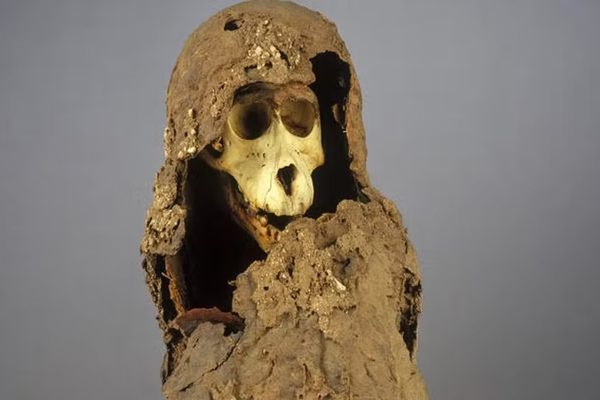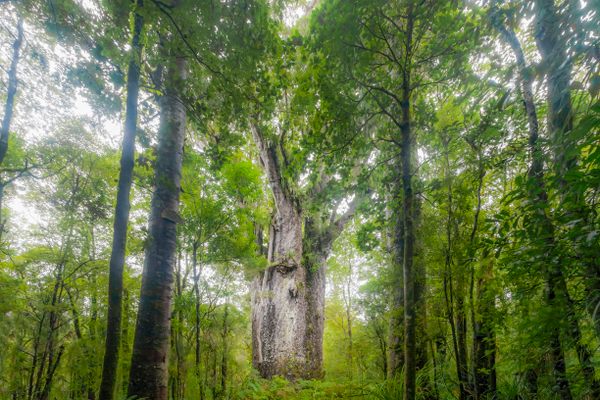Wonder Is Everywhere: Viking Hoaxes, a Secret Nuclear Ice Base, and More From Around the Web
Get a peek into what we’re obsessed with right now.
Wonder is everywhere. That’s why, every other week, Atlas Obscura drags you down some of the rabbit holes we encounter as we search for our unusual stories. We highlight surprising finds, great writing, and inspiring stories from some of our favorite publications.

The U.S. Tried to Build a Secret City Under Greenland’s Ice
by George Bass, Washington Post
In the late 1950s, in the midst of the Cold War, the U.S. Army launched Project Iceworm, a top-secret plan to turn the Greenland ice sheet into a launch pad for nuclear weapons targets the U.S.S.R., and construct an enormous underground city to house 11,000 troops. But the effort faced an enemy far more dangerous than Moscow: Mother Nature.
Is Walking Backwards Good for You?
by Annabel Bourne, BBC Future
In the 19th and early 20th century, “retro-walking”—yes, walking backwards—was a favorite pastime of bet-settlers and record-breakers, with some people traveling hundreds and even thousands of miles in reverse for bragging rights. But the practice reportedly dates back to ancient China, where it was considered a healthy activity—an assertion modern researchers now agree with. Walking or running backwards has been shown to protect athletes from injury, help those who have difficulty walking, and burn more calories than plain old forward locomotion.
One Man’s Mission to Record All of British Folklore
by Alice Fisher, The Guardian
Since the 1960s, folklorist David “Doc” Rowe has been traveling throughout the United Kingdom, cataloging the country’s folk traditions and often odd rituals. Think cheese-rolling, straw bears, and Krampus runs. But who will preserve the more than 20,000 books, 4,000 tape cassettes, and 3,500 hours of reel-to-reel audio that Rowe, now 79, has amassed?
Did These Curious Rock Formations Inspire the Great Sphinx?
by Nathaniel Scharping, Eos
More than 4,000 years ago, sculptors carved the Great Sphinx from a mound of limestone bedrock in Egypt. Researchers at New York University now believe those ancient artists were inspired by the landscape itself, specifically a rock formation carved by windblown sand, known as a “yardang,” which may have resembled the mythical creature.

Lost 18th-Century Love Letters Finally Opened
by Kai McNamee, NPR
In the late 1750s, a batch of letters from France addressed to the crew of the warship Galatée went astray in the midst of the Seven Year War. They finally ended up, unopened, in Britain’s National Archive. That’s where historian Renaud Morieux found them, wrapped in white ribbon. “I had to basically pull the string a bit like a Christmas gift,” he says. “My heart started to beat faster and I felt like, ‘Ooh, this looks like really cool stuff … There might be some secrets in there.’”
Elusive Egg-Laying Mammal Caught on Camera for the First Time
by Laura Baisas, Popular Science
It’s been more than six decades since scientists have seen an Attenborough’s long-beaked echidna, one of only six monotremes (egg-laying mammal species) known to exist. But on the last day of a difficult four-week expedition in the Cyclops Mountains of Indonesia the rare creature—with “the spines of a hedgehog, the snout of an anteater, and the feet of a mole,” according to one researcher—was captured on camera.

The Surprisingly Durable American Tradition of Forging Viking Artifacts
by Martyn Whittock, Slate
The Heavener Runestone in eastern Oklahoma was a little known curiosity until a local woman “solved” the mystery of its inscription. She believed it was proof that the Vikings had reached the middle of the continent in the 11th century. It’s just one of “many cases of clear forgeries and hoaxes—or, possibly, Native American monuments which have been culturally hijacked in the search for evidence of Vikings,” writes Martyn Whittock in this excerpt from his new book, American Vikings.
Is This the End of the Tustin Blimp Hangars?
by Gustavo Arellano, Los Angeles Times
More than a week after one of the two mammoth blimp hangars at the old Tustin military base in Orange County, California, caught on fire, the World War II–era relic was still burning; the collapsing roof and toxic fumes made the site too dangerous for firefighters. Now the fire has sparked a heated debate over what should happen to the beloved landmark next.




























































Follow us on Twitter to get the latest on the world's hidden wonders.
Like us on Facebook to get the latest on the world's hidden wonders.
Follow us on Twitter Like us on Facebook